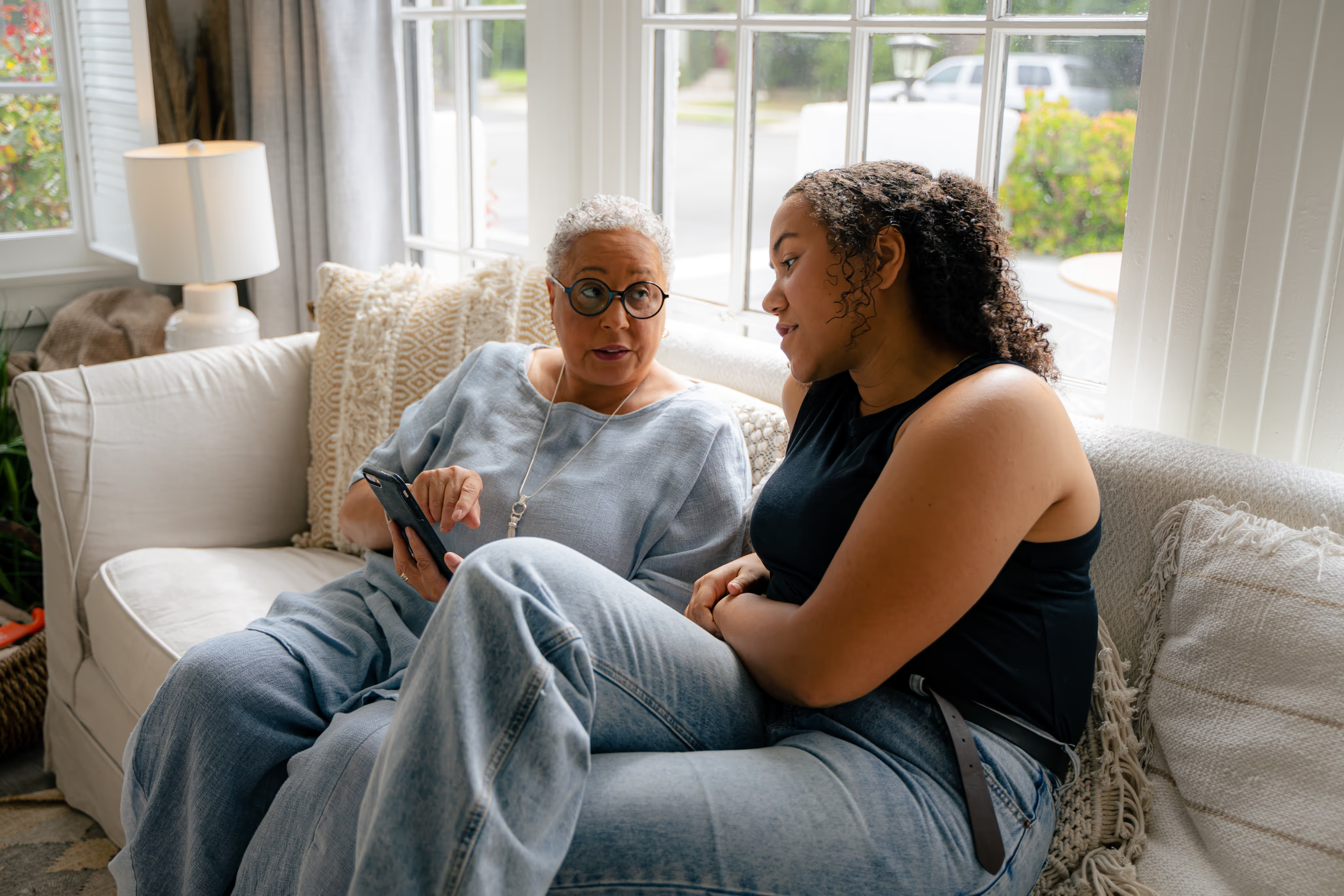Guaranteed to teach you things you never knew.
Unraveling the Reminiscence Bump: A Deep Dive into Memory and Storytelling
Memories from our formative years often resonate more vividly due to the “reminiscence bump,” a phenomenon that emphasizes the significance of our teenage and early adult experiences in shaping our identity and emotional well-being.
Isn't it interesting how some memories stand out from our daily round of chores and routines? Have you ever noticed how memories from your teenage years to your early twenties seem to be painted in bold, vibrant colors while others, well, they just seem kind of grey and smudged? You're not alone if you've ever wondered why. There's actually a name for this - it's called the 'reminiscence bump.'
Just like a bump in the road can jolt you into remembering where you are, the reminiscence bump pokes at our memory so we remember quite a bit from our teenage years and early adulthood. These memories hold more detail, they're more alive. In this post, we're going to dig in deeper into this idea, uncover what's happening and chat about why it's important.
What is the Reminiscence Bump?
The reminiscence bump is a psychological phenomenon that pertains to our memory recall pattern. As per this phenomenon, adults, particularly older adults, have a tendency to recall a disproportionately large number of memories from adolescence and early adulthood, typically between the ages of 10 and 30.
This intriguing phenomenon got its name because, when graphed, the age distribution of these rich emotional and personal autobiographical memories shows an increased number, or a "bump," around this formative stage of life. The reminiscence bump covers a range of memories, from significant life events, friendships, to cultural preferences such as favorite music or films.
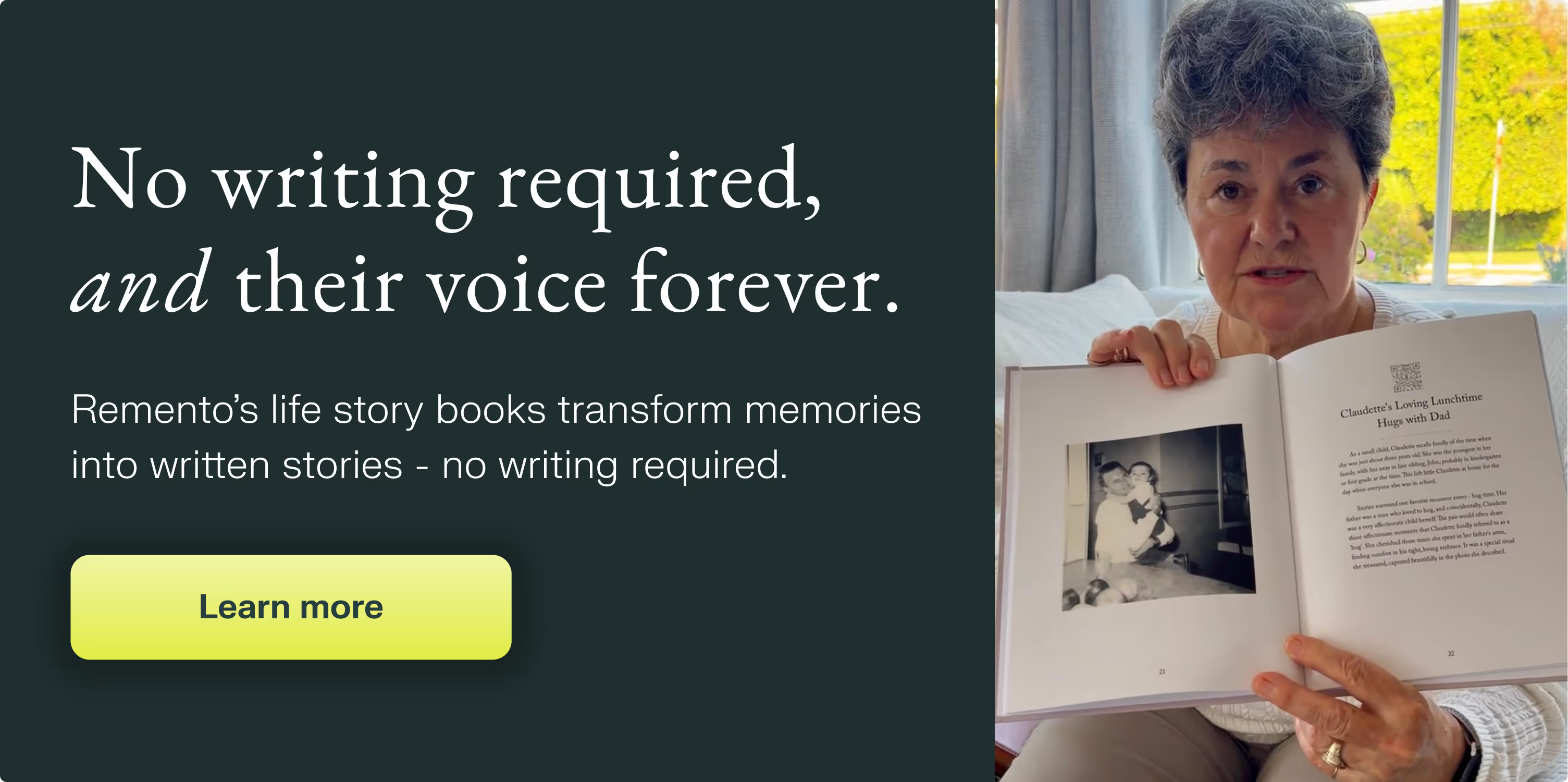
Pioneering research in this area by cognitive psychologists has sought to comprehend and illuminate why memories from this period of our lives appear to be more vivid and accessible than memories from other life periods. As each memory evokes a story about a small part of our youth or early adulthood, understanding the reminiscence bump phenomenon can provide us valuable insights into how our identity is shaped and how our past continues to influence our present.
What Is the science behind the Reminiscence Bump?
Unraveling the science behind the reminiscence bump has at its core a focus on human memory. According to scientific research, our brains transition from a state of rapid development into maturity during adolescence and early adulthood. At around fifteen years of age, our brains are about 80% developed and continue to mature until we are in our mid-twenties. This developmental phase overlaps with the time period to which the reminiscence bump has been linked.
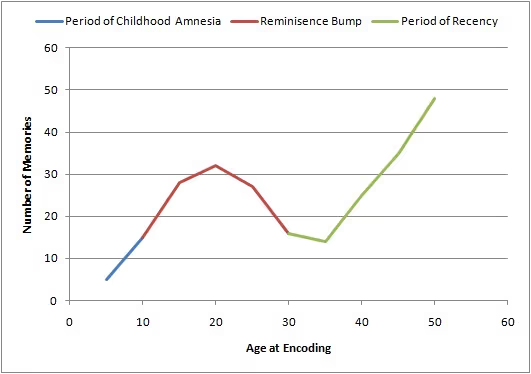
While this period signifies the advent of many firsts, researchers suggest that these "novel" experiences are often more deeply encoded into our memory, resulting in rich, vivid mental records. First love, the first day at college, our first job, first car — these are many 'first experiences' that come to mind. And this could be one line of reasoning that supports the existence of the reminiscence bump.
However, this is just one piece of the puzzle. The Cognitive Model and other theories weigh the impact of the reminiscence bump against biological, cognitive, and socio-cultural factors. According to the Cognitive Model, our brain absorbs more information during high novelty periods due to which we can recall more details from that time. In contrast, the socio-emotional selectivity theory sheds light on how our emotional requirements change as we age, suggesting that the reminiscence bump's pattern results due to our shift in focus from future-orientated goals, like acquiring knowledge, to emotion-related goals, such as emotional satisfaction.
Emerging scientific research sheds light on possible links between the reminiscence bump and neurobiological changes associated with aging. The loss of memories from our most recent past due to degenerative diseases like dementia is one of these potential correlations. Such connections underscore why uncovering the science behind the reminiscence bump and its association with cognitive processes is of paramount importance in advancing our understanding of human memory.
How does the Reminiscence Bump influence storytelling?
We have all had the experience of sharing stories about high school, our first car, or a pivotal summer during our college years. Often, storytelling feeds and flourishes on our reminiscence bump. Vividly recollected stories from our formative years not only make for nostalgic, engaging narratives but also, at their core, define who we are. Whether consciously or subconsciously, they shape our identity, our values, and our beliefs. It's these stories digital marketers tap into for branding, marketing, and advertising campaigns.
Learn more: How Our Senses Trigger Memories
Does the Reminiscence Bump exist among those with Dementia?
One of the most unfortunate realities of aging is the potential development of cognitive disorders, such as Alzheimer's Disease and other types of dementia. These conditions gradually rob individuals of their ability to form and retrieve new memories, making the reminiscence bump an essential part of therapeutic interventions.
Engaging dementia patients in nostalgic memory activities often leads to improved mood, increased social interaction, and enhanced cognitive performance. Recalling music, faces, or events from their forming years—protected by the reminiscence bump—might also establish a new communication path with dementia patients and contribute to maintaining their cognitive capabilities.
Is the Reminiscence Bump used in Life Review Therapy?
Life review therapy, a psychotherapeutic approach that navigates aging populations through their life histories, significantly benefits from the concept of the reminiscence bump. Therapists use this technique to tap into those plentiful memories of early adulthood, encouraging individuals to reflect and make sense of their lives. It assists in improving their self-worth, decreasing their depressive symptoms, and promoting their psychosocial well-being.
Clearly, the reminiscence bump is a fascinating phenomenon that reinforces the power of memory in our lives. Whether it is storytelling to connect with ourselves and others, or as a therapeutic tool to aid cognitive disorders or in life review exercises, the reminiscence bump has a profound impact on the way we perceive, remember, and narrate our personal experiences.
Does the Reminiscence Bump impact our emotional health?
Narrating stories from our past, particularly those from our adolescent and early adulthood years, is not merely a form of self-expression or for connecting with others; it also has profound implications for our emotional health.
According to some researchers, nostalgia, a sentiment often evoked by the reminiscence bump, has diverse psychological benefits. It can foster feelings of social connectedness, continuity, and meaning, thereby promoting psychological well-being. Reconnecting with our past helps us to remember memorable moments and experiences, bringing positive emotions, making us feel happier, and increasing our self-esteem and optimism.
In a world where the pace of life is continually accelerating, reminiscing about our past, particularly those pivotal experiences from our formative years, can provide a sanctuary, a sense of connection, and continuity that can be comforting and emotionally therapeutic. This is another fascinating area where the reminiscence bump plays a crucial role, highlighting its profound and far-reaching implications on our emotional health.
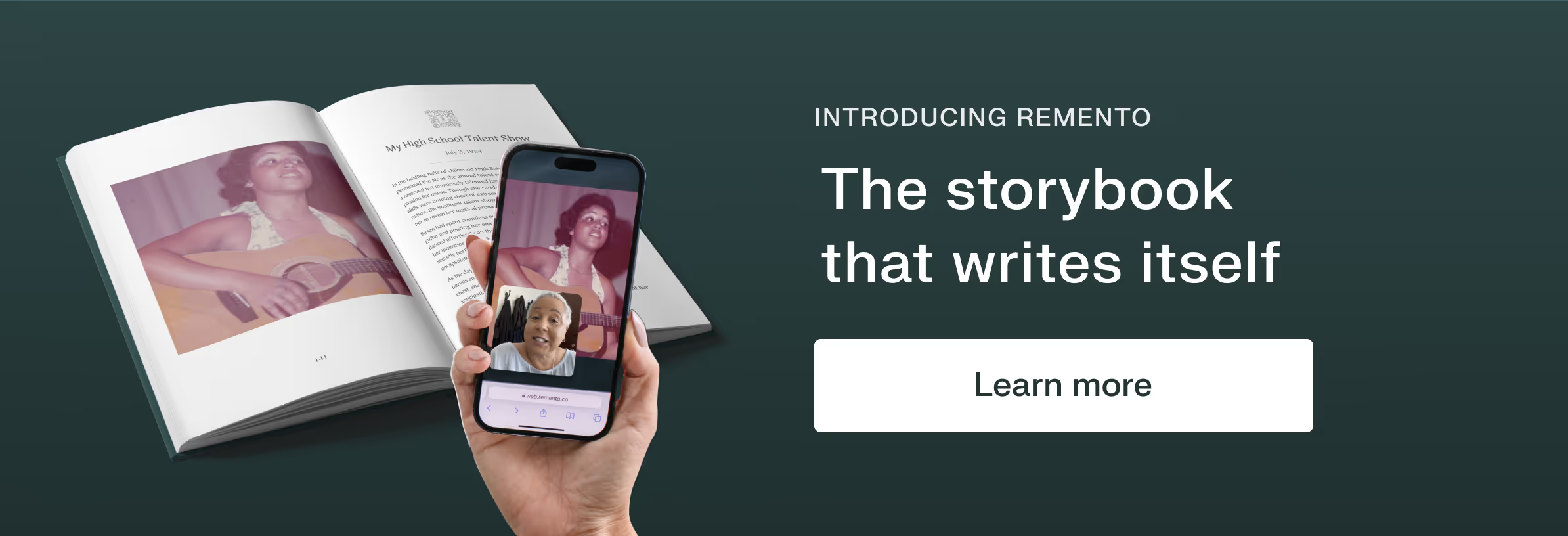
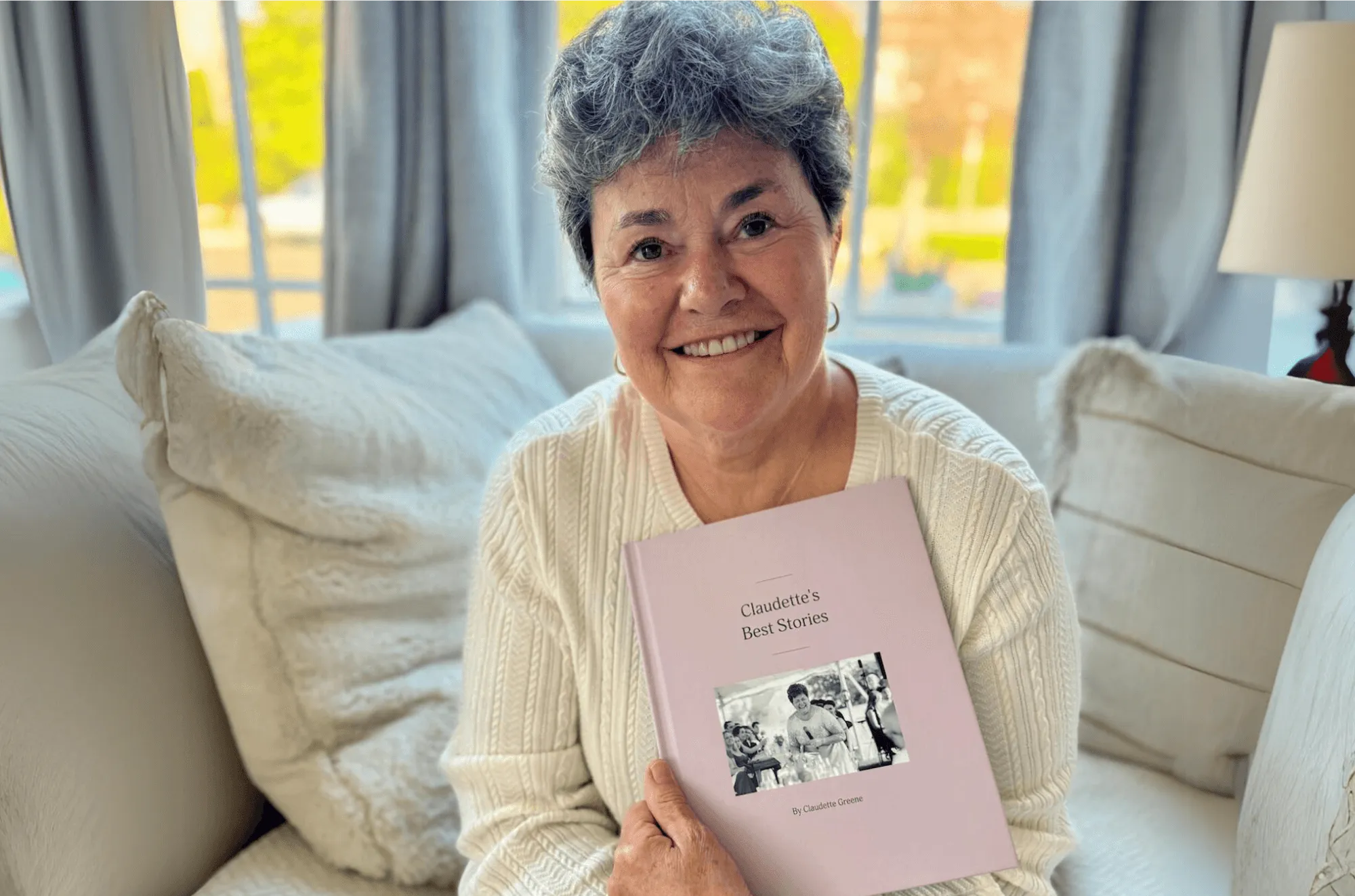
Their stories, forever at your fingertips
Remento’s life story books turn a parent or grandparent’s memories of the past into a keepsake book for the future - no writing required,.
Capture priceless family memories today
Join the thousands of families using Remento to preserve family history, all without writing a word.
.avif)
.avif)
